Knowledgeable Boards: A Choice, Not an Assumption
Non-profit associations function on an interesting governance premise – we have volunteer Boards of Directors who are relied upon to set the vision and direction the organization should take in pursuit of their vision and mission. All-too-often, Boards gather around the table with the intention of representing a larger membership, and in some cases, industry, but are only informed by their own experience or personal network. Seeking insight and broader perspectives is an active choice on the part of governance and the association, and of the many paths to achieving listening mastery for our leadership, we most often rely upon reports as pre-reads before the Board meeting. In focusing on this as a vehicle of knowledge growth, the level of knowledge mastery most often falls in one of the following levels – written in ascending knowledge potential:
1. Come as you are – This is when items appear on the Board agenda without any corresponding background/analysis/information. In these cases, we are asking Board member for input strictly based on their own experience and personal reference. While we rely upon their ability to put the association interest first in all decisions, these processes are absent of larger voice.
2. Pages of reports – The reports of committees, councils, special interest groups, components, task forces, and staff all make up the pre-Board meeting reading packet. While we may lament our Board members don’t do a full read of their materials, we are relying on them to read every page, pulling out the key points that they need to bring to the Board table at the meeting.
3. Executive summaries – Each report that is included as a pre-read or on the Board consent agenda includes an executive summary top-page – bullet points of the top things that the Board should know/pay attention to in the report. These allow the Board to quickly assess the most important conclusions and questions remaining from each report, identify patterns, and ask deeper questions where the conclusions presented necessitate exploration.
4. Information reflection – Board members are asked, as they read through the pre-read reports, what information surprised them or warranted surfacing for further discussion. This high-level exercise expresses an expectation to Board members to incorporate the report they read into their discussions and decisions.
5. Correlated decisions – This last level incorporates a methodology of asking, when a vote is called on an issue, what reports/information a Board member suggesting a specific approach is incorporating into their motion.
Of course, Board members can’t know everything about all areas. Yet, if associations don’t provide the proper information and direction, and there isn’t intention on the part of the Board on what is intended when it comes to broader reflection, then we are left with Board decisions based on limited perspective. When it comes to setting the course for any organization – we need our Boards to be as knowledgeable as possible. As you prepare for your next Board meeting, which level of knowledge will your leaders bring to the table?
